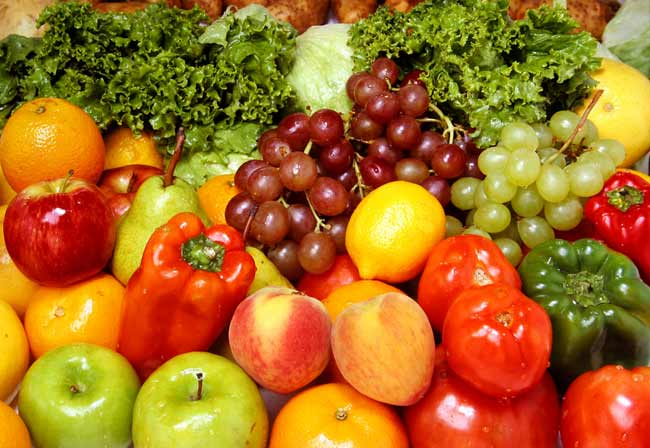Myths About Diabetes and Diet Persist

Once upon a time, in the dark ages of the 1960s and '70s, a diabetes diet meant avoiding sugar. Refrigerators of diabetics were filled with Fresca; sugar bowls were filled with Sweet'N Low; and, for the most part, plates were still filled with meat and potatoes.
That diet didn't work so well, and self-administered insulin shots were often needed to keep blood-sugar levels safe.
The thought of a life devoid of sugar, let alone refreshment coming in the form of Fresca, might send shivers down your spine. Fortunately, our knowledge of how to manage diabetes has grown considerably. The diet that is best for diabetics is in fact the same healthy diet rich in vegetables and whole grains recommended for everyone. The catch is that diabetics have to pay more attention to it.
Unfortunately, the myth of diabetes as the "just-don't-eat-sugar" disease lingers, and this does many a diabetic more harm than good.
Diabetes pandemic
Diabetes is largely a diet-related disease. Lifestyle changes — improved diet and regular exercise — result in a 93-percent reduction in the risk of developing diabetes, according to a massive European study published in August 2009 in Archives of Internal Medicine.
Not surprisingly, adult-onset type 2 diabetes, the most common type today, in which cells cannot use insulin properly, was a rare disease as little as 60 year ago. By 1980 about 5 million Americans had diabetes. Today over 24 million Americans, or 8 percent of the population, are diabetic, and nearly 60 million are pre-diabetic, according to the Centers for Disease Control and Prevention. Rates have paralleled the expansion of waistlines.
Get the world’s most fascinating discoveries delivered straight to your inbox.
Diet can be your best defense in managing or warding off diabetes. The Diabetes Prevention Program, funded by the National Institutes of Health, found way back in 2002 that improved diet and exercise was better than medicine, in this case, metformin, at preventing pre-diabetics from becoming diabetics. Numerous studies have supported this.
Most recently, Italian researchers have found that diabetics who ate a Mediterranean diet rich in nuts, healthy oils, vegetables and whole grains were less likely to need medication to control their diabetes and reduced their risk of heart disease, too. This was published in September in Annals of Internal Medicine.
The real diabetes diet
Depending on the specifics of diseases, a person with diabetes or pre-diabetes would likely benefit from eating small meals, usually a modest breakfast, lunch and dinner with two or three snacks in between. The goal is regularity to keep blood sugar, or glucose, levels low and constant.
Cells use glucose, a simple sugar, for fuel. The pancreas secretes insulin to ferry that glucose into cells. Often in type 2 diabetes, muscle, liver and other cells don't absorb glucose in the presence of insulin. So the pancreas, sensing all this glucose, generates even more insulin to get the glucose into cells. A nasty imbalance ensues.
A big meal might flood the bloodstream with glucose, so smaller meals are better. Table sugar can indeed spike the blood with glucose, but so too can other simple carbohydrates such as white bread. A diabetic or pre-diabetic should eat more of the kinds of carbohydrates that don't breakdown quickly into glucose. These are known as foods with a low glycemic index, and they include most vegetables, whole grains, and low-carb foods like meat, eggs and fish.
Foods with a high glycemic index — the same stuff dominating the U.S. diet in recent years — include most processed foods, breakfast cereals, doughy white bread, baked potatoes and anything high in sugar.
Why not just go on a low-carb diet? Low-carb diets often are synonymous with high-fat diet. Aside from keeping a steady glucose level, diabetics need to maintain healthy blood pressure and cholesterol levels. This is because chronic elevated glucose levels damage blood vessels, placing a diabetic or pre-diabetic at higher risk for heart disease, peripheral vascular disease (leading to loss of feet and legs), stroke and blindness from weak blood vessels in the eye.
Diabetics need to plan out a diet dominated by foods with a low glycemic index. They can treat themselves to sugar by substituting this for any other food high glycemic index, depending on their allowance based on glucose levels.
It's not easy to stay on a healthy diet. I can't sugarcoat it, so to speak. You need to get together with a doctor and dietician. But unlike other diets you've been on, this one could be a matter of life or death.
- What Are the Signs of Diabetes?
- Video: Spice Might Curb Diabetes
- 'Switches Off' Genes Linked to Obesity, Diabetes
Christopher Wanjek is the author of the books "Bad Medicine" and "Food At Work." His column, Bad Medicine, appears each Tuesday on LiveScience.

Christopher Wanjek is a Live Science contributor and a health and science writer. He is the author of three science books: Spacefarers (2020), Food at Work (2005) and Bad Medicine (2003). His "Food at Work" book and project, concerning workers' health, safety and productivity, was commissioned by the U.N.'s International Labor Organization. For Live Science, Christopher covers public health, nutrition and biology, and he has written extensively for The Washington Post and Sky & Telescope among others, as well as for the NASA Goddard Space Flight Center, where he was a senior writer. Christopher holds a Master of Health degree from Harvard School of Public Health and a degree in journalism from Temple University.


